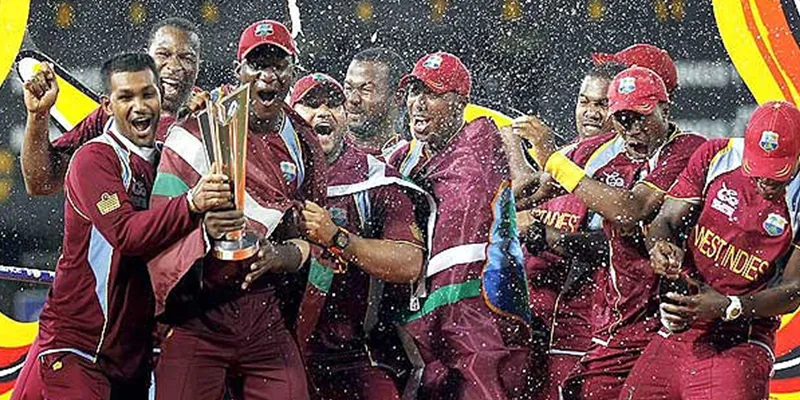Here is what startups can learn from the ‘champions’ – West Indies cricket team
Entrepreneurs can learn a great deal from the history of the West Indian Cricket team. There is no other team that faced off with such terrible omens and odds. Their journey can be captured in four timelines. Each time their entrepreneurial zeal blew away their critiques to smithereens.
The early years
The West Indies cricket team were termed as Calypso Cricketers by their critics in England during their formative years (1920–1971). Remember back then all of world cricket was centred around London, while much of the new world was trying to shed their colonial skin. Therefore, the term Calypso Cricketers was derogatorily used to undermine the talent in the Islands denoting the impurity that the Caribbean people brought upon the white man’s game. The mainstream press tongue-lashed the West Indian cricketing style as flamboyant and lacking in class. Although there were greats like Gary Sobers, Rohan Kanhai, Wes Hal, Frank Worrell, Clyde Walcott and Everton Weekes, the world did not take them seriously. This was about to change by 1973.
Lessons from the entrepreneurs in this era:
- Let the past not stop you.
- Have pride because you are born free.
- Build a strong foundation for a team to follow.
- Hard work is the only substitute to recognition.
The Island Nation, which is the only team in the world that combines players of 16 different countries, was just waking up its potential.

The success of the second era
The West Indies entered their second era in 1975. Under Clive Lloyd and Vivian Richards, the West Indies became the only sporting team in the world that remained undefeated for 15 years, the streak began in 1980. That fantastic team built its pride on the notion of Black Power (rising up from their past as slaves) and the pride of their African ancestors. The team’s narrative was built around “We can beat the white man at their own game.” Clive’s battery of five killer fast bowlers was the first of its kind in the history of cricket. The tactics made the Englishmen “Grovel”, a term that was used by the late English cricket captain Tony Greg, in 1976, to undermine the West Indians. It inspired Clive Lloyd’s team to turn the word in to Tony Greg’s nemesis as the battery of West Indian fast bowlers destroyed England.
Lessons for entrepreneurs:
- Go after your beliefs.
- Hit the market hard.
- Build talent and inspire youth.
- Winning is the only thing that matters.
- Do something completely new which the market has no choice but to follow you.
- The past is no longer the barrier.
- You have made your mark.
This feat, of not being beaten for 15 years, was ended by Australia in 1995, which ultimately rocked the Islands to the core. By then the world had changed. Economic progress had taken individuals far away from the narrative of Black Power and the idea of a Caribbean nation fell on the way side. Most of the talent left to sports that paid well; basketball and football being the obvious choice.
The third era: Collapse
1996-2010: This was an era where the players and their Cricket Board came to loggerheads over pay and selection of the national squad. While the whole cricketing world had become a professional outfit, which picked up players through a merit-based system that allowed youngsters to hone their skills in local and national academies, the Windies had become embroiled in picking players from a school-based system that picked raw talent. By then the funding had dried up because the Windies were not a winning team anymore. Although this period saw the likes of Brian Lara, Curtly Ambrose, Carl Hooper, Shivnarine Chanderpaul, and Courtney Walsh hit their cricketing peak, their talents were not enough to win big tournaments. Victories were few and far between. The only notable victory came in the ICC Championshionship in 2004. Any bookie would have given this team a 1 to 100 chance of victory in this era. Even that victory did not change the cancer that plagued the system, which was the fight between the players and the Cricket Board. The old guard asked the team to play for pride, while the young guard said “pay up” first.
Lessons from this era
- Fix administrative failures.
- Accept the strategy has not worked.
- Settle disputes quickly.
- Find a common ground with founders.
- Never forget to build talent.
- Let go of people, but do not hold them and not pay them.
- Find ways to make a comeback.
2011–2016: A new hope
The term Calypso Cricketer was back in vogue by 2008 thanks to the IPL. Only this time it was not used in a derogatory fashion, it was used by commentators for the sheer entertainment and value for money that the Caribbean players provided to spectators. It was a renewed hope for West Indian cricket.
Players like Chris Gayle, Dwayne Bravo, and Kieron Pollard brought back West Indian cricket and stamped its name on the map of world cricket in the 20-20 format. Yet, the problems with their Board continued. That’s when the youngsters stepped up their game. They became world class cricketers and brand ambassadors by playing for every club that paid them. They were labelled as “cricketers-for-hire” or hired-guns, but they fulfilled their duties to the fullest. Their six hitting prowess had the world clamouring for more. Their fielding and bowling was as nimble as a fox in the fields.
All this globe-trotting bore fruit, over the last six years, and has inspired two world cup victories. And yet again their Board ignores them. Sometimes you have to thank the young and innocent. After winning the Under-19 junior world cup, in the early part of the year, the captain Shimron Hetmyer told the media that he wished to take West Indies cricket back to the top. This statement inspired the senior players, who then were embroiled in problems with pay, to find a new awakening. In a matter of month, they are back to their winning ways with two more trophies in the cabinet. The women’s and men’s team won the World T-20 championship and have shocked the cricketing world. They beat all odds.
A month ago the men’s team was in a despicable situation. They did not have uniforms, there was no money, and there were whispers in the corridors of power that the West Indies team would not participate in the World Cup. However, Darren Sammy and their merry bunch scripted their way in to the book of cricketing legends. Theirs was a story of struggle and strife, of egos and naysayers, of lack of belief and inner strength.
The final lesson
- Fight the odds.
- Every team needs a maverick.
- It never hurts to have all-rounders in the team.
- Let's not complain, let our work speak.
- Rise to the occasion when people knock you down.
- Enjoy your success and defeats.
- The system may not accept you, but you have proved the critics wrong.
This is what makes “Champions”. Now go do the dance.







